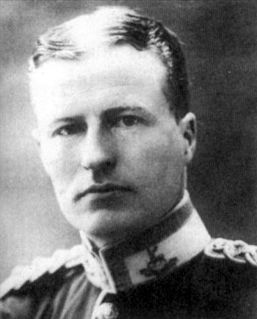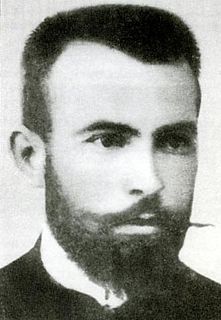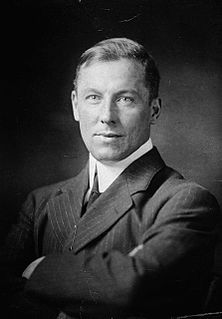 W
WThis page lists the known war correspondents, war photographers, war artists, and war cinematographers who were active during the First and Second Balkan Wars.
 W
WEllis Ashmead-Bartlett was an English war correspondent during the First World War. Through his reporting of the Battle of Gallipoli, Ashmead-Bartlett was instrumental in the birth of the Anzac legend which still dominates military history in Australia and New Zealand. Through his outspoken criticism of the conduct of the campaign, he was instrumental in bringing about the dismissal of the British commander-in-chief, Sir Ian Hamilton – an event that led to the evacuation of British forces from the Gallipoli peninsula.
 W
WStephen Bonsal was an American journalist, war correspondent, author, diplomat, and translator, who won the 1945 Pulitzer Prize for History.
 W
WJames David Bourchier was an Irish journalist and political activist. He lived in Sofia from 1892 to 1915. Bourchier was an honourable member of the Sofia Journalists' Society. He acted as an intermediary between the Balkan states in the beginning and at the conclusion of the Balkan Wars of 1912-1913.
 W
WBennet Graham Burley was a Scottish-born pirate, Confederate spy and journalist. Later in life, he changed his surname to Burleigh and became a celebrated war correspondent for London's The Daily Telegraph.
 W
WNoel Edward Noel-Buxton, 1st Baron Noel-Buxton, PC was a British Liberal and later Labour politician. He served as Minister of Agriculture and Fisheries under Ramsay MacDonald in 1924 and between 1929 and 1930.
 W
WMary Edith Durham, was a British artist, anthropologist, noted Albanophile and writer who became famous for her anthropological accounts of life in Albania in the early 20th century.
 W
WJames H. Hare was an English photojournalist active between 1898 and 1931. He was the leading photographer during five major wars, and was the driving force behind Collier's becoming a large circulation magazine. Among other conflicts he covered, he photographed the Mexican Revolution (1910-20).
 W
WWilliam Tufnell Le Queux was an Anglo-French journalist and writer. He was also a diplomat, a traveller, a flying buff who officiated at the first British air meeting at Doncaster in 1909, and a wireless pioneer who broadcast music from his own station long before radio was generally available; his claims regarding his own abilities and exploits, however, were usually exaggerated. His best-known works are the anti-French and anti-Russian invasion fantasy The Great War in England in 1897 (1894) and the anti-German invasion fantasy The Invasion of 1910 (1906), the latter becoming a bestseller.
 W
WHélène Vitivilia Leune, also known by the pen name Lène Candilly, was a French writer of Greek origin, traveler, war correspondent, and decorated Red Cross nurse.
 W
WJean Victor Charles Edmond Leune was a French war correspondent, writer, press photographer, military aviator and member of the French Resistance.
 W
WFilippo Tommaso Emilio Marinetti was an Italian poet, editor, art theorist, and founder of the Futurist movement. He was associated with the utopian and Symbolist artistic and literary community Abbaye de Créteil between 1907 and 1908. Marinetti is best known as the author of the first Futurist Manifesto, which was written and published in 1909.
 W
WKrste Petkov Misirkov was a philologist, journalist, historian and ethnographer.
 W
WFrederick Palmer was an American journalist and writer.
 W
WVladislav Petković Dis was a Serbian impressionist poet. He died in 1917 on a boat on the Ionian Sea after being hit by a German torpedo making him also remembered as a war poet.
 W
WVeljko Petrović was a Serbian poet, writer, art and literary critic, and theoretician.
 W
WGeorges Bertin Scott was a French war correspondent and illustrator for the French magazine L'Illustration during the early 20th century. His work was part of the painting event in the art competition at the 1928 Summer Olympics. He produced paintings of the Balkan Wars and the First World War, and also covered and illustrated scenes from the Spanish Civil War and the early Second World War. One of his works, an oil painting of his depicting King Constantine I of Greece during the Balkan Wars hangs in main entry hall of the Presidential Palace in Athens. In 1909 Scott married French singer Nelly Martyl, who served as a nurse during the First World War, and was awarded the Croix de Guerre.
 W
WRobert William Service was a British-Canadian poet and writer, often called "the Bard of the Yukon".
 W
WLev Davidovich Bronstein, better known as Leon Trotsky, was a Ukrainian-Russian Marxist revolutionary, political theorist and politician. Ideologically a communist, he developed a variant of Marxism which has become known as Trotskyism.
 W
WMilutin Uskoković was a Serbian short story writer and soldier.
 W
WFrederic Villiers, British war artist and war correspondent. Along with William Simpson and Melton Prior, Villiers was one of the most notable 'special' artists of the later 19th century. He may have been the model for the Kipling war-artist character, Dick Heldar in The Light that Failed.
 W
WKostia Vlastos was a Greek of the diaspora, scion of a family of bankers.